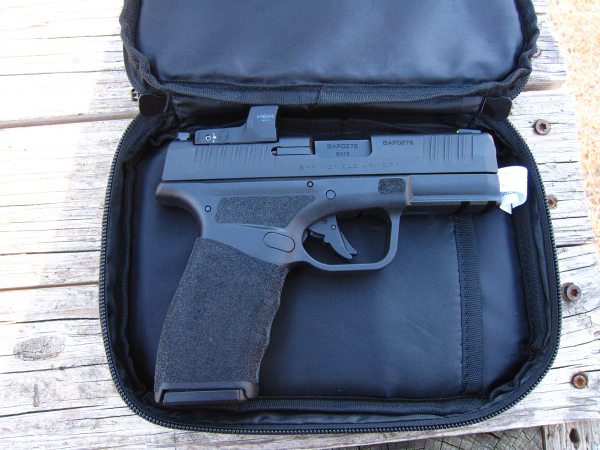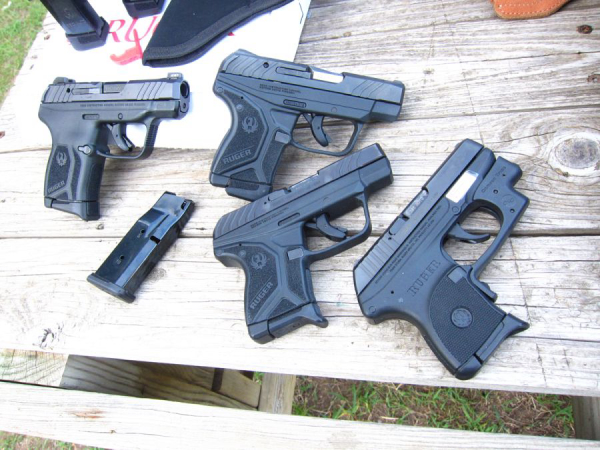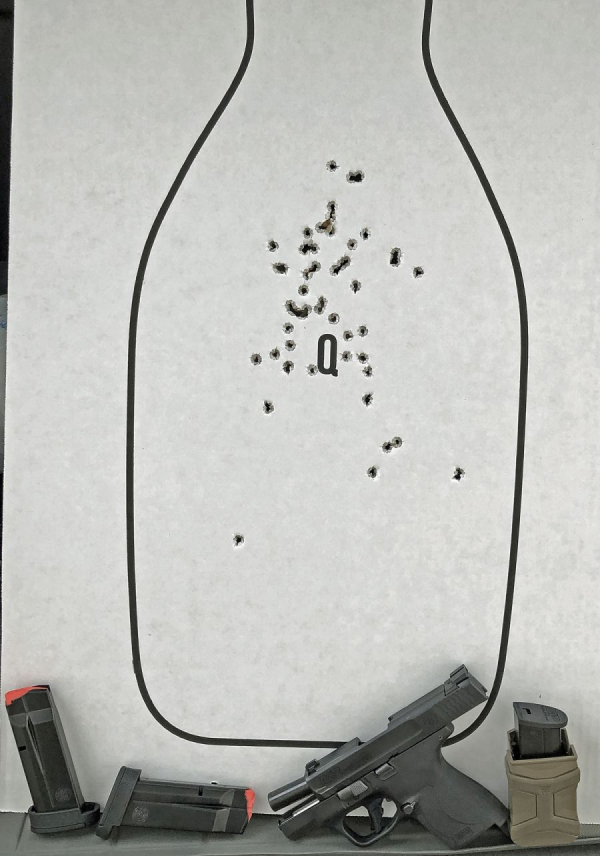
More and more we’re seeing the smaller handguns being selected for personal protection roles. Is that a bad thing?
While on a trip, I stopped to visit a gun shop in another state. I saw a pair of customers walk up to the counter and ask to see guns for concealed carry. What do you think they concentrated on?
A Ruger MAX-9, a SIG P365 and a Springfield Armory Hellcat. I watched as they discussed the various merits and handled the guns – I noticed that no one got muzzled, a good thing – and they left empty-handed, but appearing to want to explore the subject before they decided.
When the subject of the smaller self-defense handguns arises, there are some obvious issues. If the size is really small (think a ca. 11 ounce short-framed 380), they’re subject to complaints that they are hard to shoot well and hard to handle – operationally and administratively.
Consider also that if the caliber is large for the pistol size/weight, shooting them a lot causes some problems: a lot of shooting can aggravate degenerative joint/connective tissue injuries as well as causing other, temporary, discomfort.
The interest in the new lines of smaller protection guns is not surprising. Larger guns are tougher to pack around routinely and that creates social and tactical problems – (1) discretion is often vital to one’s continued employment or to prevent distress with the non-dedicated types, and (2) discretion is critical when trying to avoid notice by criminal types – who, like police, think it’s important to know who around them is heeled. Add to that the fact that the larger size and weight can have a negative impact on one’s continued health from uneven distribution of weight, pressure on the body/load-bearing joints, etc. Ask career cops from the 1970s and 1980s.
Splitting the difference between the new micro-9s and service guns – think “compacts,” like the GLOCK 26, M&P9C, and others – are simply full-size guns that have been ‘chopped,’ making them a kind of subcompact. They’re not without disadvantages: there’s a compromise of a proper grip – sometimes too short or rotund to get a firm grip on -- and a compromise with the short slide/barrel. The issue there is ballistics (too low a velocity to ensure bullet performance). Finally, this compromise gun carries like the bigger gun that spawned it.
With those problems, they still enjoy some minimal concealment advantages – as well as a shooting advantage. This became evident when, because I was forced to shoot slower to make hits, I found I could shoot the G26 with far more accuracy than pre-Gen5 GLOCK 9mm pistols.

What about the cross-overs? With the longer grip (like the service models) that are fitted with a compact (ca. 4”) barrel and slide, you have the shootability of the big gun with the weapon retention features of the shorter guns. There are the modern incarnations of the snubbed larger frame revolvers with more grip than barrel; the leverage is all with the user.
I looked around in the bowels of the internet to see about the experiences of others.
I found mention that shooters using smaller guns experienced a loss of proficiency – estimated at only around 10% less performance if you carry and train with a “reasonably sized gun,” according to Rhett Neumayer, a young instructor who “colors outside the lines” with interesting and illuminating results. He said that, for him, the “reasonably sized gun” category included the SIG P365XL, the GLOCK 43X and the Springfield Armory Hellcat.
Instructor Karl Rehn has likewise studied the issue at some length. I won’t summarize his findings, but I’ll pass along some of his observations with my comments.
“With respect to my data, the small gun definition is generally (a) 3" barrel with a 3-finger, needs-a-pinky-shelf-magazine frame. G48 and 365XL are the guns I recommend to students as the best compromise - 4" barrel with thin skinny frame. The other critical issue from my data is that those that choose large and small guns from the same product line (G43 & G19 for example) typically lose less performance than those that choose extreme variations, like 5" steel framed 1911 and 2" scandium J-frame.”

My term for such “best compromise” guns is “micro-service compact” and the version I’d most recently tried was the Hellcat Pro – a 4” 15-shot auto in an extremely slim package. With all the variables, you could have a 3” barrel, 12-14 shot 9mm or a ten-shot 3” auto. I found a number of examples of the micro-9mm to be fatiguing to shoot.
What about speed? For me, I still have to apply the brakes to ensure the hits. The small guns – and the thin guns with longer frames – are still jumpy. I don’t see this as an operational disadvantage – unless your objective is to shoot very fast for a video and you’re on a range.
Just a few days ago, I saw mention of a story in which a gun owner had been robbed of an “assault rifle” (sic). The victim produced a handgun and a fight followed. The offender was struck a number of times, but a pair of bystanders also took rounds from the citizen defender.
Now I don’t know what the cadence of fire was, but I’ll guess he didn’t need someone to tell him to shoot faster. He clearly needed someone to tell him to slow down and shoot better.

What both sources stated was that (1) if the gun was smaller, people tended to be more likely to carry them – a gun left at home is without value in a fight; and (2) if one practiced, shooting the smaller guns, you’d likely “shoot within 10% of your performance with something much less comfortable and concealable.” (Neumayer)
That’s not nothing. A good many people can’t carry the larger guns in their daily lives. I can, but when “real life” intrudes with appointments, travel, etc., I’m likely to be packing the S&W Shield.
You decide what you’ll tolerate as far as risk of exposure versus effectiveness in defense. There are certainly enough options out there.
-- Rich Grassi